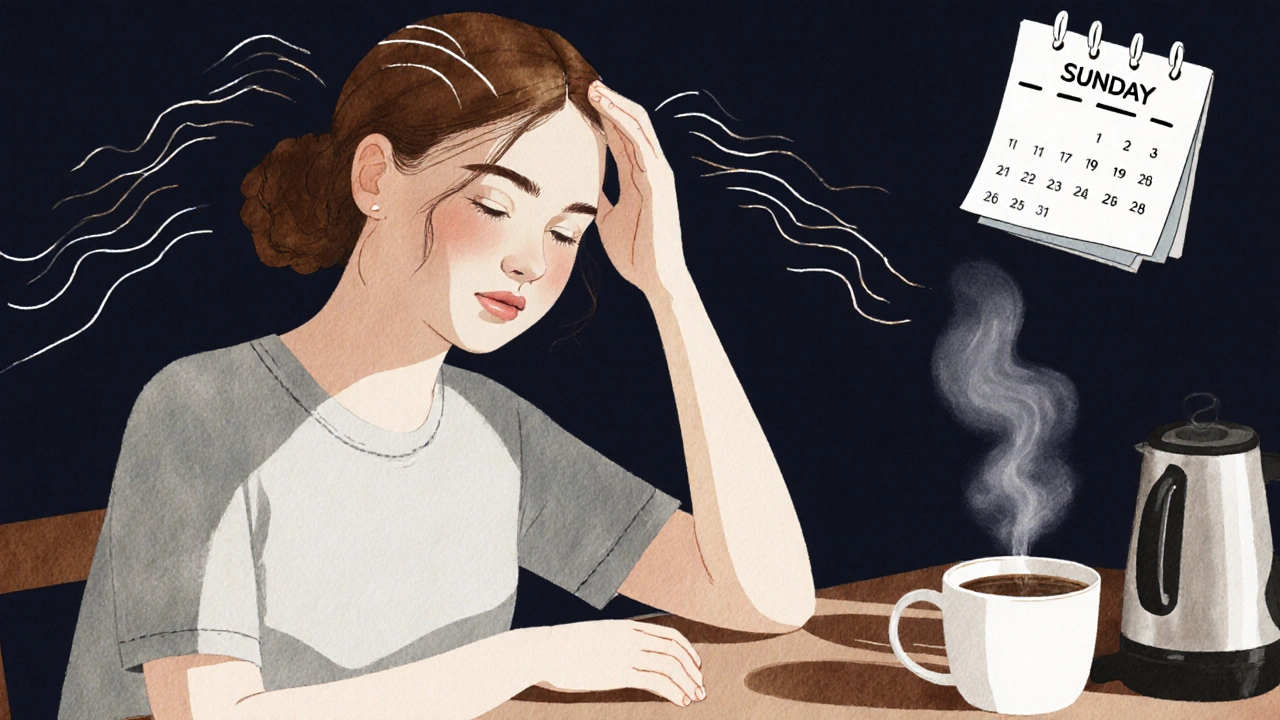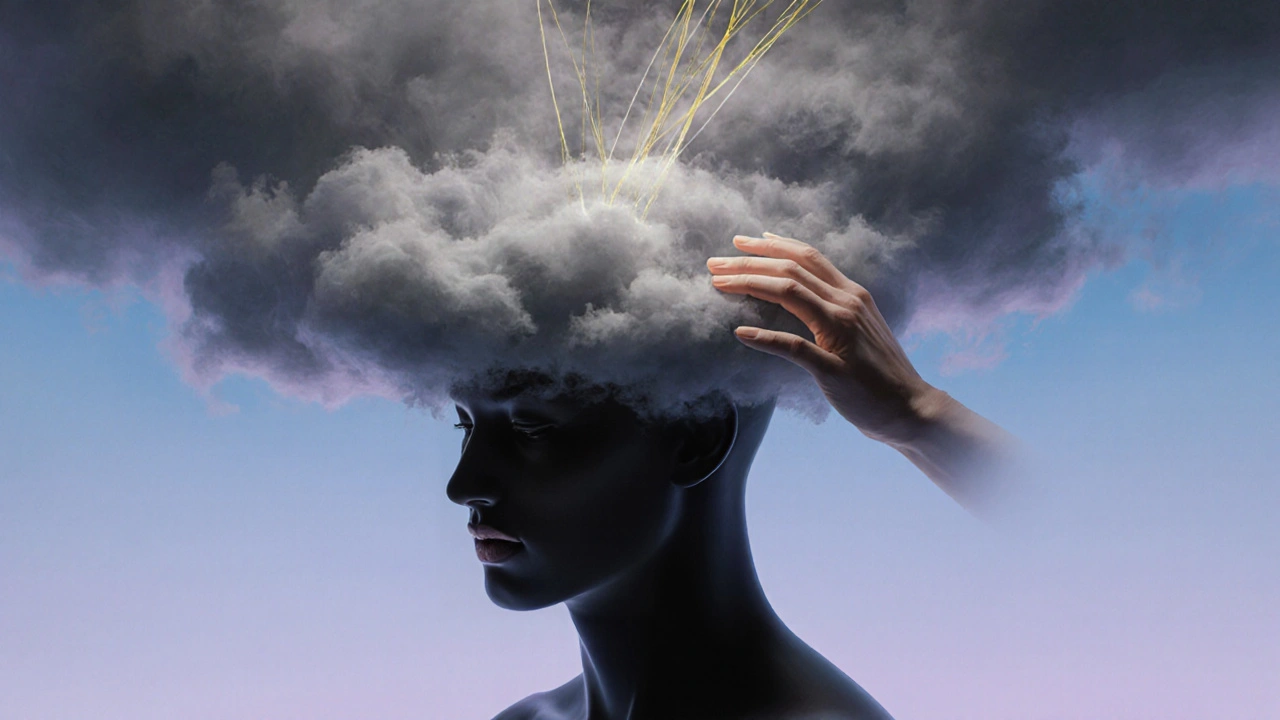Why Head Massage Should Be Part of Your Weekly Routine

You know that tight band around your forehead after a long day? Or the dull ache behind your eyes when your brain just won’t shut off? That’s not just stress-it’s your body screaming for relief. And guess what? You don’t need a full-body spa day to fix it. Sometimes, all you need is five minutes with your fingertips on your scalp.
Head massage isn’t just for spa days or luxury hotels. It’s a simple, powerful tool that fits into real life. And if you’re not doing it at least once a week, you’re missing out on some of the most immediate, tangible benefits your body can give you.
What Exactly Is a Head Massage?
A head massage isn’t just rubbing your temples. It’s a targeted technique that works on the scalp, forehead, neck, and sometimes even the ears and jaw. It uses pressure, circular motions, and gentle pulling to stimulate blood flow, release muscle tension, and calm the nervous system.
Think of your scalp like a map of stress. Every knot in your forehead, every tight spot behind your ears, every stiff neck muscle-it all connects back to your brain. When you massage those areas, you’re not just relaxing skin. You’re sending signals to your nervous system: “It’s safe to slow down.”
This isn’t new-age fluff. Ancient traditions like Ayurveda and Traditional Chinese Medicine have used head massage for centuries. Modern science backs it up too. A 2021 study in the Journal of Clinical Nursing found that participants who received daily 15-minute head massages for two weeks reported significantly lower cortisol levels and improved sleep quality.
Why You Should Do It Weekly (Not Just When You’re Overwhelmed)
Most people think of head massage as a rescue tool-something you do when you’re already in pain. But that’s like waiting to drink water until you’re dehydrated.
Doing it weekly is preventative. It’s like brushing your teeth. You don’t wait for a cavity to start flossing. You do it regularly because you know it stops bigger problems.
Here’s what happens when you make head massage a habit:
- Stress melts faster-Your cortisol drops within minutes. No pills, no apps, no expensive therapy.
- Headaches lose their grip-Tension headaches? They often start in the neck and scalp. Regular massage breaks the cycle before it starts.
- Sleep improves-The parasympathetic nervous system kicks in. Your body shifts from “fight or flight” to “rest and digest.” That’s the gateway to deep sleep.
- Your hair gets healthier-Increased blood flow means more oxygen and nutrients reach your follicles. You might not grow faster, but you’ll notice less breakage and more shine.
- Focus sharpens-When your brain isn’t stuck in pain mode, it can actually think clearly again. No more mental fog after lunch.
One client I worked with-a graphic designer from Utrecht-started doing 10-minute head massages every Sunday night. She said: “I used to wake up on Monday with a headache and dread the week. Now I wake up calm. I don’t even need coffee to get going.”
How to Give Yourself a Head Massage (No Tools Needed)
You don’t need a professional, a machine, or a fancy oil. Your hands are enough.
Here’s how to do it in five minutes, sitting in your chair or lying on your bed:
- Start at the forehead-Use your fingertips to make small circles from the center of your brow out to your temples. Do this for 30 seconds.
- Move to the scalp-Place your palms on the top of your head. Gently press and slide your hands back toward your neck, using light pressure. Repeat 5 times.
- Work the sides-Use your index and middle fingers to make small circles along your hairline, from your temples down to your ears. Spend 1 minute here.
- Massage your neck-Use your thumbs to press into the base of your skull, just above your neck. Hold for 5 seconds, release. Repeat 5 times.
- Finish with the ears-Gently pull your earlobes down, then rub the area behind your ears. This triggers a calming reflex.
Do this before bed, after your morning coffee, or even during a work break. No one needs to know. You can do it under your desk. No one will notice.

Head Massage vs. Other Relaxation Methods
Is head massage better than meditation? Than yoga? Than a bath?
It’s not about being better. It’s about being accessible.
Here’s how it stacks up:
| Method | Time Needed | Equipment | Immediate Effect | Can Be Done Alone? |
|---|---|---|---|---|
| Head Massage | 5-10 minutes | None | Yes-within minutes | Yes |
| Meditation | 10-20 minutes | Quiet space | Slow-takes practice | Yes |
| Yoga | 20-30 minutes | Mat, space | Gradual | Yes |
| Bath | 15-30 minutes | Bathtub, water | Yes | Yes |
| Professional Massage | 30-60 minutes | Therapist, appointment | Yes | No |
Head massage wins on speed, simplicity, and consistency. You can do it anywhere. You don’t need to plan. You don’t need to wait. It’s the most practical form of self-care you’re probably ignoring.
What to Expect During a Professional Head Massage
If you want to go deeper, a professional head massage is a whole different experience.
In Amsterdam, many wellness centers offer head-only sessions-30 to 45 minutes, often paired with aromatherapy or warm oil. You sit in a comfortable chair, fully clothed. The therapist uses slow, rhythmic pressure, sometimes with warm sesame or coconut oil. You might feel tingling, warmth, or even a slight dizziness-that’s your nervous system resetting.
It’s not just about touch. It’s about presence. A good therapist will work with your breathing, matching their rhythm to yours. By the end, you’ll feel like your head is lighter. Like you’ve been unplugged from a constant static hum.
Don’t expect it to be relaxing like a spa day. It’s more like a reset button for your brain.

When to Skip It (And When to Be Careful)
Head massage is safe for almost everyone. But there are a few exceptions:
- Don’t massage if you have open wounds, infections, or recent head injuries.
- Avoid deep pressure if you have migraines with aura or severe neck issues. Light touch is fine, but don’t dig in.
- If you’re pregnant, ask your doctor first. Some pressure points can trigger contractions.
- Don’t use oils if you have eczema or psoriasis on your scalp. Stick to dry massage.
Otherwise? Go for it. Even if you’re not sure it’ll help, give it a try for a week. You might be surprised.
How to Make It Stick
Here’s the truth: most people start strong. Then life happens. Work piles up. Kids wake up. The couch wins.
So how do you make it stick?
- Link it to something you already do. Do it right after brushing your teeth. Or while you’re waiting for your coffee to brew.
- Set a reminder. Put a note on your phone: “Head massage-Sunday 8 PM.”
- Track it. Mark an X on your calendar each time you do it. Five Xs in a row? That’s a win.
- Pair it with something pleasant. Light a candle. Play soft music. Wrap yourself in a blanket. Make it feel like a ritual, not a chore.
The goal isn’t perfection. It’s consistency. Even three times a week makes a difference.
Frequently Asked Questions
Can head massage help with hair loss?
It won’t regrow hair if you’re genetically prone to balding, but it can reduce shedding caused by stress. Improved circulation helps keep existing hair stronger and healthier. One 2020 study showed participants with mild hair thinning experienced less shedding after 24 weeks of daily scalp massage.
Do I need oil for a head massage?
No. Dry massage works great. Oil just adds glide and can soothe a dry scalp. If you use it, choose something light-coconut, almond, or jojoba. Avoid heavy oils if you have oily hair.
How often should I get a professional head massage?
Once every two weeks is ideal for most people. If you’re under high stress, weekly helps. If you’re just maintaining, once a month keeps the tension from building up.
Can I do a head massage on someone else?
Absolutely. It’s one of the most intimate yet non-sexual ways to show care. Many couples do it before bed. Just use gentle pressure and ask if it feels good. A little communication goes a long way.
Why does my head feel tingly after a massage?
That’s your nervous system waking up. The pressure stimulates nerves under the scalp, which sends calming signals to your brain. It’s a good sign. It means your body is shifting out of fight-or-flight mode.
Start small. Just five minutes. One day this week. No excuses. Your brain will thank you.


ANDRES BELLO GARCIA
November 11, 2025 AT 02:16I tried this last Sunday after work and honestly? My headache vanished in like 3 minutes. No joke. I didn’t even need my ibuprofen.
Now I do it every night before bed. Simple, free, and actually works.
Ashley Williams
November 11, 2025 AT 09:20OMG YES THIS. I’m a single mom of three and my scalp feels like it’s been clamped in a vice since 2020. I started doing this while waiting for the microwave and now I’ve got my 7-year-old doing it on me-she calls it ‘brain relaxation time.’
Also, my hair’s been shinier. Not because of products. Just because I stopped killing my scalp with stress and ponytails.
Do it. Even if you think you’re too busy. You’re too busy NOT doing it.
Carolyn Kay
November 12, 2025 AT 01:29I’m sorry but this whole article reads like a poorly edited influencer post with cherry-picked studies. Yes, massage can temporarily reduce tension-but calling it a ‘preventative’ tool like brushing your teeth is misleading. There’s zero longitudinal data proving weekly head massages prevent chronic headaches or hair loss. The 2021 study had 42 participants. The 2020 hair study? 60 people over 24 weeks. That’s not science, that’s anecdotal noise wrapped in bold headers.
And don’t get me started on the ‘no tools needed’ claim-what about people with arthritis? Or carpal tunnel? Your ‘five-minute’ routine requires fine motor control and wrist mobility that not everyone has. This isn’t self-care-it’s wellness capitalism dressed in scalp oil.
Also, you misspelled ‘massage’ twice. Just saying.
Olga Jonkisz
November 13, 2025 AT 07:33BABY. I DID THIS WHILE WEARING MY FUR COAT IN THE MIDDLE OF A BOARD MEETING. NO ONE NOTICED. I WAS THE CALMEST PERSON IN THE ROOM. MY CEO ASKED IF I’D BEEN ON VACATION.
Also, I started using argan oil and now my hair looks like I paid $300 for a blowout at the Ritz. The tingling? That’s your soul sighing. You’re not just massaging your scalp-you’re rebooting your aura.
Also, if you’re not doing this with candles and lo-fi beats, you’re doing it wrong. And also, I just bought a jade roller for my forehead. You’re welcome.
PS: I told my therapist. She cried. Then booked a session with me. I’m basically a wellness guru now. No cap.
somya katiyar
November 13, 2025 AT 18:32This is so true. In India, our grandmothers have always massaged heads with coconut oil before bed-it’s just part of life. No one called it ‘self-care,’ they just did it because it felt right.
I started doing it again after reading this, and my anxiety has dropped. I didn’t even realize how much tension I was holding until it was gone.
Thank you for reminding me of something simple that was always there.